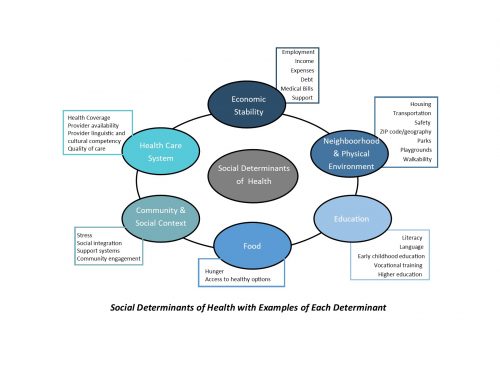We are so focused at present on the immediate short-term needs of our COVID-19 patients, i.e., PPE, Dialysis, Ventilators, etc. How do we case manage these acutely ill recovering workers when they are discharged home?
We need a discussion about alternatives for the outpatient setting for evaluation and ongoing care. In the CompAlliance blog post dated 4/23/2020, we introduced you to our Telephonic 24/7 Triage Nurses who recently added a component to their Triage protocols to include COVID-19 Triage for both occupational and non-occupational cases. Today we are going to share with you some information about our COVID-19 Case Management program (it is a different product/service than triage). We are also going to share some of the challenges we are currently working to overcome.
Goals of the CompAlliance COVID-19 Telephonic Case Management Program
Our COVID-19 Telephonic Case Management Program is designed to be a short-duration case management service to assist employers and employees through this time of uncertainty. If an employee files a claim for COVID-19, or has a suspected exposure, we remain optimistic that the outcome may be little more than a period of anxiety and lost time from work in self-isolation, but it is important that an employee understands how to care for themselves and the need to stay in isolation until they are cleared to return to work.
The Telephonic Case Manager is assigned for monitoring of the employee’s condition during their self-isolation, adherence to self-isolation, and adherence to their treatment plan through their medical provider, allowing communication of the employee’s return to work capabilities to the employer designee or claims professional. The Case Manager is available to the employee for questions about symptoms, supporting the need for adherence to isolation practices, and escalating to more specialized treatment if the need arises.
An Initial Assessment is obtained utilizing the criteria that serves as guidance for evaluation as a person under investigation (PUI) in association with the outbreak of COVID-19, and determination of exposure risk, based on this assessment. The Case Manager instructs and assists the employee in contacting the Department of Health and either the employee’s personal physician or occupational physician (referral source’s preference). Frequent contact is made to assess for any increased symptomatology, update the referral source, continue to address return to work capabilities and follow-up with the physician as needed.
Findings and Challenges – An employee was hospitalized in an ICU. How do we coordinate care, post-discharge?
Consider a case where the employee required an ICU in-patient stay, as a result of COVID-19 complications, is recovering and has been released to return home. Our Case Managers are finding the biggest hurdle is finding a treatment provider for routine follow-up and specialists for treatment and assessment of any ongoing residual complications.
The Case Manager has been having difficulty even when working with our traditional w/c resources for coordinating care, DME, etc. in locating any type of physician specialty willing to take a work-related COVID-19 patient.
Findings and Challenges – A healthcare provider was caring for an in-home patient diagnosed with COVID-19. How do we coordinate care, post-discharge?
Subsequently the care provider began to feel ill, was admitted to the hospital for several days, then was sent home. After discharge, the employee was experiencing renewed symptoms including an elevated heart rate, diarrhea and other symptoms. The case was referred to one of our Case Managers who continued to follow up with the employee during their hospitalization and subsequent discharge back to the home setting.
- When the employee was originally admitted into the hospital, he was placed under his private insurance. The adjuster did send in her contact and billing information, but the insurance verification department and the hospital case management department remained reluctant to change billing responsibility and information sharing to workers’ compensation until the case manager became involved in the case and was able to clarify the exposure was determined to be work related. Following this clarification and after several phone calls and faxes, the hospital ultimately released the information needed to administer the claim.
- It was noted discharge from acute care was faster and more abrupt than usual. Although the floor had the Case Manager’s information before discharge, the employee was the one who called the Case Manager after his discharge to the home setting later the day of discharge. The hospital case manager/discharge planner at the hospital provided no notice of impending discharge. Through follow-up, the CompAlliance case manager was able to obtain from the floor nursing staff, the discharge needs.
- The home DME needs were clarified and those needs were ordered for the employee after his discharge.
- The vendor providing the DME threatened to sue the employee and his family after delivering the DME, when he found out the employee had a history of COVID-19, even though there was no contact and both parties were wearing masks, gloves and the deliverer did not go into the house or even see the employee. The vendor’s manager called the employee after the delivery was completed and said if he or his employee came down with COVID-19 they would sue him.
- There was difficulty finding a primary physician to coordinate home care needs, as it was discovered physician offices will not accept COVID-19 patients.
Discussion of Challenges
- The usual in-hospital processes for obtaining records, ensuring appropriate channeling of billing, discharge planning, etc. appears to be disrupted at this time due to either uncertainty of how to handle these cases by the hospital staff, the staff’s fear and anxiety, or high caseloads?
- It is extremely difficult to coordinate follow-up care. Physicians and their offices are unwilling to treat a COVID-19 case. How are patients to receive follow-up evaluation?
- It appears that at least some ancillary service providers are not educated as to safe distancing protocols, and their ability and responsibility to safely provide humane and appropriate services as an essential service provider.
- Education on the part of the in-patient facilities is needed to ensure continuity of care upon discharge.
- We are so focused at present on the immediate short-term needs, i.e., PPE, Dialysis, Ventilators, etc. but what about these acutely ill patients when they are discharged home? We need discussion and alternatives for the outpatient setting to ensure ongoing evaluation and care.
- We need to ensure accessibility of appropriate PPE for all treatment providers so they can provide evaluation and treatment.
- The patients are in essence being re-victimized because no one wants to provide the care. These recovering workers need someone to advocate for them and communicate with them on a regular basis to ensure adherence to the treatment plan and facilitate discussing any questions or concerns they may have.
Ongoing Disposition
- Both cases benefited from the expertise of an experienced Case Manager who was knowledgeable about the resources in their area and the potential availability of “tele-resources” for follow up.
- In both cases, the recovering workers were successfully referred to a tele-medicine resource that could provide the services required to continue ongoing care, evaluation and specialty referral as needed.
- The Case Managers will be there to
- Ensure communication between all stakeholders
- Provide encouragement and reinforcement of the treatment plan
- Investigate resources for care
- Conduct frequent telephonic assessments
- Communicate with the employer to investigate return to work opportunities
- Facilitate a focus on return to work when medically appropriate, based on the employee’s functional capabilities.
In conclusion, we are all working in uncharted waters; we are learning about this disease and its implications in both the acute and long-term. The need for collaboration between all stakeholders is paramount. So much of the care has been focused necessarily on the care of the most acutely ill up to this point, however we will need to determine how best to care for these workers during their recovery phase, and how best to facilitate a medically appropriate return to work. Case managers are well-suited to work as the needed liaison between all stakeholders.



